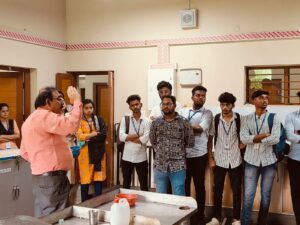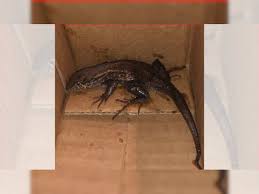Researchers develop new method to reduce up to 90% CO2 emissions by steelmaking industry

Researchers at the University of Birmingham have developed a process that they say can reduce iron and steelmaking emissions by 90 per cent.
Researchers at the University of Birmingham have designed a new adaptation that can be applied to existing iron and steel furnaces, with the potential to reduce carbon dioxide emissions from the steelmaking industry by nearly 90 per cent.
The research team achieved this through a “closed loop carbon recycling system,” which, according to the university, can replace 90 per cent of the coke that is typically used in modern blast furnace systems. According to the research paper published in the Journal of Cleaner Production, the system produces oxygen as a byproduct.
“Current proposals for decarbonising the steel sector rely on phasing out existing plants and introducing electric arc furnaces powered by renewable electricity. However, an electric arc furnace plant can cost over £1 billion to build, which makes this switch economically unfeasible in the time remaining to meet the Paris Climate Agreement. The system we are proposing can be retrofitted to existing plants, which reduces the risk of stranded assets, and both the reduction in CO2, and the cost savings, are seen immediately,” said Yulong Dil, corresponding author of the research paper, in a press statement.
Most of the world’s steel is produced using blast furnaces that can produce iron from iron ore, and basic oxygen furnaces which then turn it into iron, according to the University of Birmingham. The manufacturing process is very carbon-intensive. In order to make the metallurgical coke used in the process, coal has to be destructively distilled in a coke oven—a process that produces carbon monoxide and carbon dioxide.
With the new carbon recycling system, the researchers envisage capturing the carbon dioxide from the “top gas” that comes out of the furnace and reducing it to carbon monoxide using a “perovskite material.” This carbon monoxide can be fed back into the furnace to raise its air blast temperature.
This is possible because in an environment with a high concentration of carbon dioxide, the perovskite splits the carbon dioxide, which can be fed back into the furnace, and oxygen, which is absorbed by the material. The perovskite can then be returned to its original form using a reaction that takes place in low-oxygen environments. The extra oxygen produced in this process can then be used in the basic oxygen furnace to produce steel.
)







Thank you very much for sharing. Your article was very helpful for me to build a paper on gate.io. After reading your article, I think the idea is very good and the creative techniques are also very innovative. However, I have some different opinions, and I will continue to follow your reply.
I may need your help. I tried many ways but couldn’t solve it, but after reading your article, I think you have a way to help me. I’m looking forward for your reply. Thanks.
allergy pills for rash generic allergy pills generic name for allergy pills
online doctors who prescribe zolpidem sleeping pills online order
deltasone usa prednisone 20mg ca
over the counter stomach relief buy coversyl tablets
cause of pimples in adults crotamiton without prescription best topical acne medication prescription
major brand allergy pills seroflo order best allergy over the counter
the best medication for heartburn buy altace online cheap
brand accutane brand isotretinoin accutane 20mg tablet
order sleep meds online order meloset 3mg online
amoxicillin 250mg pill amoxicillin 250mg for sale amoxicillin 500mg drug
where can i buy azithromycin order zithromax generic azithromycin
cheap neurontin online gabapentin over the counter
azithromycin without prescription order azithromycin 250mg for sale buy azithromycin 250mg pills
furosemide price furosemide 40mg ca
buy omnacortil 10mg online cheap order omnacortil 5mg online prednisolone tablets
deltasone 40mg sale prednisone where to buy
buy amoxicillin no prescription amoxicillin 500mg oral amoxil 500mg price
oral doxycycline 200mg buy doxycycline 100mg generic
albuterol price buy asthma pills onlin ventolin inhalator over the counter
cheap clavulanate buy cheap augmentin
levothyroxine medication levoxyl pill synthroid order online
purchase clomid pill serophene online buy clomid 100mg canada
buy tizanidine no prescription tizanidine pills tizanidine cost
purchase rybelsus without prescription buy rybelsus 14mg online brand rybelsus
buy deltasone generic where can i buy prednisone deltasone 20mg uk
order semaglutide 14 mg for sale order generic rybelsus 14 mg semaglutide for sale
order accutane 20mg generic order accutane 20mg for sale buy isotretinoin 40mg sale
amoxil 250mg canada cheap amoxicillin 1000mg cheap amoxicillin pill
buy azithromycin without a prescription azithromycin 500mg uk zithromax 250mg usa
augmentin 1000mg pill buy augmentin 625mg without prescription clavulanate sale
buy omnacortil 20mg sale order omnacortil 5mg generic prednisolone 5mg oral
cost synthroid brand synthroid 150mcg order levothyroxine online
buy gabapentin 100mg for sale order neurontin for sale neurontin 800mg brand
cost clomid 100mg cheap clomiphene 100mg serophene online buy
order furosemide 100mg generic buy furosemide online diuretic lasix brand
buy sildenafil 100mg generic viagra 100mg pills for sale oral viagra 50mg
vibra-tabs without prescription monodox brand buy doxycycline 200mg
rybelsus 14mg for sale purchase semaglutide online buy semaglutide 14 mg online cheap
buy vardenafil 10mg pill levitra 20mg ca purchase levitra online
lyrica 75mg drug buy lyrica generic lyrica 75mg for sale
triamcinolone medication triamcinolone online order triamcinolone 4mg pill
tadalafil 5mg oral rx pharmacy online cialis tadalafil cheap
clarinex sale desloratadine pill clarinex over the counter
buy cenforce 100mg for sale cenforce pill order cenforce 50mg for sale
buy claritin 10mg online cheap loratadine 10mg for sale buy loratadine no prescription
aralen 250mg uk aralen 250mg ca buy aralen 250mg sale
order priligy 30mg generic misoprostol pills order cytotec 200mcg pills
glycomet for sale buy generic glucophage over the counter purchase glucophage
orlistat 120mg drug diltiazem 180mg ca diltiazem pills
buy acyclovir for sale buy zovirax 400mg generic allopurinol 300mg
norvasc online buy order generic amlodipine 5mg norvasc where to buy
rosuvastatin pill purchase ezetimibe generic zetia 10mg tablet
order zestril 5mg sale zestril for sale order lisinopril sale
domperidone pills sumycin for sale buy sumycin sale
order prilosec 20mg generic buy generic prilosec over the counter omeprazole us
flexeril ca buy cyclobenzaprine pill ozobax sale
order lopressor online cheap buy metoprolol 100mg generic order metoprolol 100mg
buy generic ketorolac over the counter colchicine order online colcrys online buy
Your article helped me a lot, is there any more related content? Thanks!